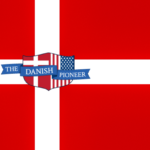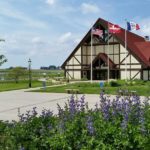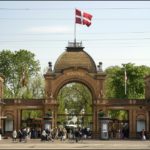
Marriage Among the Danes 100 Years Ago
Marriage and family values were raised in the 2012 U.S. presidential campaign. What about marriage in the Danish community in the Pacific Northwest (PNW) 100 years ago? Two studies, Julius Draschler’s ground breaking look at intermarriage in New York City in 1921, and Janet E, Rasmussen’s 1985 paper, I met him at Normanna Hall: Ethnic Cohesion and marital Patterns among Scandinavian Women, delivered at the 1985 Pacific Northwest History Conference gives us an idea. Drascher’s analysis, wrote Rasmussen, of the Scandinavian immigrant women who married in New York City between 1908 and 1912 “serves as the best yardstick” when looking at the same group living in PNW urban cities like Seattle and Tacoma. To shore-up Drashsler’s findings, Patsy Adams also made a study of the 1900 census for Seattle and Ballard, Seattle’s Scandinavian neighborhood that was once a city of 17,000 inhabitants. Adams, points out Rasmussen, determined an endogamous (the practice of marrying within a specific ethnic, class or social group) trend among inter-Nordic marriages. The marriage rate of Nordic-born men ranged from a low of 73 percent for Danes to a high of 85 percent for the Finns. Rasmussen found that unmarried Scandinavian women, born between 1883 and 1914, found Scandinavian bachelors in the PNW “most eager to make their acquaintance”. This was played-out in the ABC television series Here Comes the Brides (1968-1970) about the shortage of marriage-age women to men in the frontier days of Seattle. So too was the shortage of women in Seattle’s largely male Scandinavian community. In 1900, women made up 29.5 percent of Seattle’s Danish population. By 1940 this percentage had risen to 37.5 percent. “We came into Seattle on the 26th of August [1922],” said Greta P., a Danish women who traveled with her companions to the West. “When we came into the railroad station, they came – some of the young fellows – from the Danish Hall where they were staying as boarders.” Greta said the women travelers “weren’t looking our best. My hair was just like wire (after) five days on the train.” She said there was a party that night at the Washington Hall, home of the Danish Brotherhood in Seattle’s Central District, with these same Danish fellows. Another meeting place for men and women was at St. Johannes Congregation Danish Evangelical Lutheran Church.
“All of us girls, all these young girls, we were all working in homes as domestics and we had Thursdays off,” said Laura F. “So Thursday afternoon we would meet at the (St. Johannes) church. We had joined the Danish Young People’s Society, and, of course, that got the ball rolling.” She pointed out it was “all clean fun like picnics and basket socials and little plays and entertainment evenings…The fellows after work would come in the evening and play croquet out on the lawn.” “The Scandinavians…did not have to dissolve their ethnic group connections,” wrote Thomas J. Archdeacon, Professor of History at University of Wisconsin-Madison in his 1984 book, Becoming American. Because of changes in women’s work as well as the changes taking place in the wider ethnic communities, “immigrant women began to adapt to American ways before they married. Their choice of spouse served as a statement of ethnic loyalty but not to the exclusion of American values.” One noticeable difference is the age of Scandinavian women when the married. Between 1905 and 1914, women in Denmark, Norway and Sweden were, on average, 26 years of age when they married. However, if these same Scandinavian women lived in America, they would marry at a younger age just like the native-born American counterparts: twenty-two. “We used to go to dances and had a wonderful time,” said one unnamed woman. “We went together about four years before we got married.” This was another reversal of expectations, wrote Rasmussen. The choice of a marriage partner was now an individual matter involving public courtship instead of based on property ownership like back in the old country. The wedding ceremony even changed. Immigrants replaced the more elaborate stylized rituals of the old country with a simple ceremony. Partly do to many immigrants still had families back in Scandinavia; partly because of the cost. “I had a very simple wedding,” said Freda R. who was married at her sister’s house in Tacoma. “I had a Lutheran minister come there and marry us…It was just my sisters at the wedding. Then we went to Seattle for a trip.”








